Suppose we woke up one morning to learn that scientists had made contact with an extraterrestrial civilization.
What would that change? On the one hand, we would still be bounded by our terrestrial situation: a species exhilarated by technological change, but buffeted by tribalism and struggling for resources on an increasingly bruised planet. On the other hand, we would know that we were not necessarily the pinnacle of creation, that we had kinship among the stars, and that we were not truly alone.
The question of whether or not we are alone in the universe is one of the biggest and most profound that science can address. Discovering remote examples of life would affect our self-image, and continue our sequential displacement from a central position in the scheme of creation that started with the Copernican revolution.
Astronomers are sanguine that life beyond Earth will be detected. Among my colleagues, pulses are quickening because we think it may happen within the next decade. What is the source of this optimism?
The universe is highly habitable. The major biogenic elements—carbon, nitrogen, oxygen, sulfur, and phosphorus—are routinely created within stars and then ejected into interstellar space, where they become part of the next generation of stars and planets. Although heavy elements are thousands of times less abundant than the primary constituents of the universe, hydrogen and helium, when a star forms these heavy elements concentrate and cool at the periphery of the nebula. Models suggest that biochemistry could have begun within a billion years of the Big Bang. This means natural selection, or something like it, could have been operating for three times longer than the age of the Earth. As the universe ages, and more carbon is produced, it gets more hospitable for life.
A second reason scientists are bullish about the prospects of life elsewhere is the fact that simple cells formed from primitive molecular ingredients in the first 10 percent of the history of this planet. Biology grips the Earth like a fever. Microbes have radiated into every conceivable ecological niche, including many that required adaptation to extremes of temperature, aridity, toxicity, pH, and pressure. Life doesn’t necessarily need a star and it might not even need a planet.
In the past few years the burgeoning haul of exoplanets has let astronomers project the number of habitable worlds in the Milky Way. The Kepler satellite has begun to find Earth-like planets in the habitable zones of their stars. We anticipate roughly a hundred million habitable worlds in the galaxy, and ten times more habitable “spots,” or moons of giant planets far from their stars where local energy is provided by tidal or geological heating. This assumes a conservative definition of habitability based on availability of liquid water.
The principal of mediocrity implies that the full census of habitable worlds among 100 billion galaxies in the observable universe is ten billion billion. It beggars belief that all these Petri dishes are sterile. Yet logically we have to accept the possibility that biology is exceptionally rare.
In our back yard, there’s solid evidence that Mars was habitable and hosted standing bodies of water several billion years ago. Even today there is likely to be water in aquifers that erupts episodically to the surface, and so there may be extant life in those locations. Europa and a number of moons in the outer Solar System have interior water, and Titan could host an alternative mode of biochemistry based on ethane and methane.
Taking the next step—proving biology not just habitability—will be difficult. Current and planned missions to Mars can only scratch its surface and life-finding missions to the outer Solar System will cost billions of dollars and are decades away. Astronomers are perfecting the techniques needed to detect biomarkers: the chemical imprints of life in an exoplanet atmosphere. This requires the feeble reflected light of the exoplanet to be separated from the billion times stronger light of its star and dispersed into a spectrum. The archetypal biomarker is oxygen since it was created on Earth by microbes and in the absence of life it would disappear in less than ten million years. This experiment can probably be carried out within the next decade.
What if it succeeds? The discovery would generate front page headlines and reverberate around the scientific community for some time. It would allow us to conclude that the events that took place on our planet weren’t a fluke or unique. Yet knowing that we live in a universe sprinkled with microbial life is unlikely to alleviate our loneliness.
In considering true cosmic companionship we enter a landscape littered with untested assumptions and anthropocentric thinking.
Frank Drake, eponymous creator of the equation that estimates the number of cosmic pen pals, modestly described it as a container for ignorance. We have no idea how often life starts given a habitable environment, no idea how often biology develops something we would recognize as intelligence, no idea how often advanced organisms harness technology, and no idea of the longevity of creatures with these advanced capabilities. The tools used to communicate with putative aliens—radio telescopes and powerful lasers—are likely to be fleeting technologies, and they can’t be wielded by the intelligent creatures who share our planet but who lack opposable thumbs, like orcas and cephalopods. We look outward, but really we’re looking in a mirror.
Undaunted, SETI researchers (who admit that the Search for Extraterrestrial Intelligence is more accurately the Search for Extraterrestrial Technology) haven’t folded up their tents, even after six decades of the “Great Silence.” They note that within a decade or so we’ll be able to detect analogs of our radio transmitters and pulsed lasers operating on planets around the nearest hundred million stars.
If the silence persists, they contend, it really will mean we’re operationally alone, that the transition from microbial to intelligent, technological life is incredibly rare. Or will it?
Absence of evidence is not evidence of absence. There are many reasons why advanced civilizations might exist without us being aware of them. To communicate requires motivation and means. To be comprehended requires commonality of culture and language. This is a high bar; after all, we can’t talk to animals that share 99% of our DNA. What is the likelihood that we could communicate with aliens of unknown function and form? Humans are still primitive, huddling as we do on the knife edge between the heat of our star and the absolute cold of deep space. We’ve barely ventured beyond our planet. Aliens might be to us as we are to bacteria.
We’re trapped in the box of terrestrial biology and the human condition. It might pay to jump out of the box. Some researchers have argued that we should move beyond strategies based on communication and “contact” and look for aliens by their artifacts. Freeman Dyson speculated that advanced alien civilizations might harness the total energy of their star by building a sphere around it, which would radiate distinctively at infrared wavelengths. They might become post-biological, suggesting that we should look for astro-engineering on an interstellar or even a galactic scale. Conventional SETI might be doomed to fail because it’s unduly timid. Astronomers have begun to act on these suggestions by data-mining in current large surveys.
In anticipation of the outcome, we’re not immune from a century of popular culture, dating back to Percival Lowell and H.G. Wells. Science fiction has primed us to expect a zoo of aliens out there. They’re roaming the galaxy, colonizing worlds, and subjugating their peoples. Yet they have music and arts and senses of humor too. They’re strange, yet strangely like us.
Even as we enjoy the tropes and the exotic imagery of science fiction, we can recognize the implied morality tales. Aliens might be allies but they also might be enemies. They can help us but they can also destroy us. They are metaphors for salvation and retribution. In movies like Steven Spielberg’s “ET” and “Close Encounters of the Third Kind,” the Christian iconography is literal. These alien myths are mesmerizing, but surely hollow.
This Big Question has an answer. Our best bet is to follow our science and be patient, leading to another question: can we handle the answer?
Discussion Questions:
- If it turns out that life elsewhere is extremely rare, what would that imply about the history of the Earth and our place in the universe?
- Would the discovery of microbial life be less meaningful or profound than the discovery of intelligent life, and if so, why?
- Is it possible for us to talk about the nature of advanced forms of life beyond Earth without falling prey to anthropocentric thinking?
- Is the “great silence” meaningful? How many reasons could there be for us not to have any evidence of intelligent civilizations even if they actually exist?
- How strange could biology elsewhere be, and might it be unrecognizable? Related to that, how likely is post-biological evolution, where life takes mechanical or computational forms?
- If advanced forms of intelligence and civilization exist elsewhere, are we prepared for that information and how would it affect human culture?
Discussion Summary
The question “Are We Alone?” generated diverse responses and feedback, showing that in the absence of data, speculation can run in many directions. There was a tension among readers between the perspective that “aliens” will be somewhat like us, and have something to teach us, and the view of others who suspected that alien life would be unrecognizable.
Science cannot assign probabilities to these very different scenarios, and of course in a universe littered with biology, both may be true. The presence of a universal chemical toolkit for life does not prescribe the function and form of any advanced organisms that might evolve. In evolutionary biology, the arguments over the primary of convergence or contingency have continued for decades, unresolved. We are surrounded by a cosmic experiment where hundreds of millions of Earth-like planets with all the ingredients for biology have been basking in the energy from their stars, in some cases for longer than age of the Solar System. Even if microbial life exists on some or many of those planets, we have no way of estimating how many of those sites, if any, host complex life where information processing takes place in an organ like a brain as well as in the core genetic material. Since it’s possible to have intelligence without technology, as orcas and octopuses and elephants on this planet demonstrate, SETI’s “Great Silence” cannot be used to argue that intelligent life elsewhere does not exist.
I didn’t mention it in the essay but there is a “timing argument” made that since we have only just gained the capacity to travel and communicate in space, any civilization we discover or encounter will likely be substantially more advanced. There are several implications. We have been anatomically modern for nearly 40,000 years, but modern astronomy and space travel are less than a century old. We search for alien life with technologies that are rapidly evolving, and this frames what we can detect. Perhaps in a century we will be effortlessly generating gravity waves and consider this a superior strategy for SETI. Also, if an alien civilization had visited the Earth at most times in the past forty million years and looked for the brainiest creatures, they would have found them in the oceans, the ancestors of toothed whales and dolphins. Our ascendance in terms of brain capacity is fairly recent. All of these timescales are dwarfed by the time available for biological evolution beyond the Earth. A similar, but weaker, argument can be made that there have been 11 billion years for biological evolution to play out on Earth-like planets so we are also unlikely to be the first civilization to reach this level of technology. One reader alluded to this with the comment that we might be the creations of a more advanced, God-like, civilization.
Another thread of the discussion alluded not to life elsewhere, but to life on Earth, and some skepticism was expressed that the remarkable complexity of a biological organism could emerge naturally from primitive chemical components. This perspective leads into arguments based on design and teleology. Since the essay was outward-looking in its discussion of biology, a few additional comments are useful.
The original argument from design, formulated by William Paley nearly two hundred years ago, was undermined by Darwin’s theory of natural selection and it has been discredited by modern molecular biology, which provides a detailed explanation for the evolution of complexity in organisms. However, there is still a large gap in our understanding: the initial formation of genetic material and cells about four billion years ago. Since evidence of biogenesis has been mostly erased by our geologically active planet, this is historical science. But painstaking lab work has been able to show how many of the major components of a cell—a permeable enclosure, RNA fragments, and surfaces for growing complexity—can arise naturally in water. The research is still in its early days so it is premature to leap to a design premise when natural processes acting over large spans of time are likely to provide a satisfactory explanation.
The results of the discussion and the wide open conceptual landscape of astrobiology suggest several new Big Questions:
1. Can we prove that we are not the creations of a superior alien civilization or a God-like entity?
2. Might some forms of advanced intelligence be unrecognizable?
3. Given the lack of direct, physical evidence, will we be able to prove that biology arose naturally on the Earth four billion years ago?
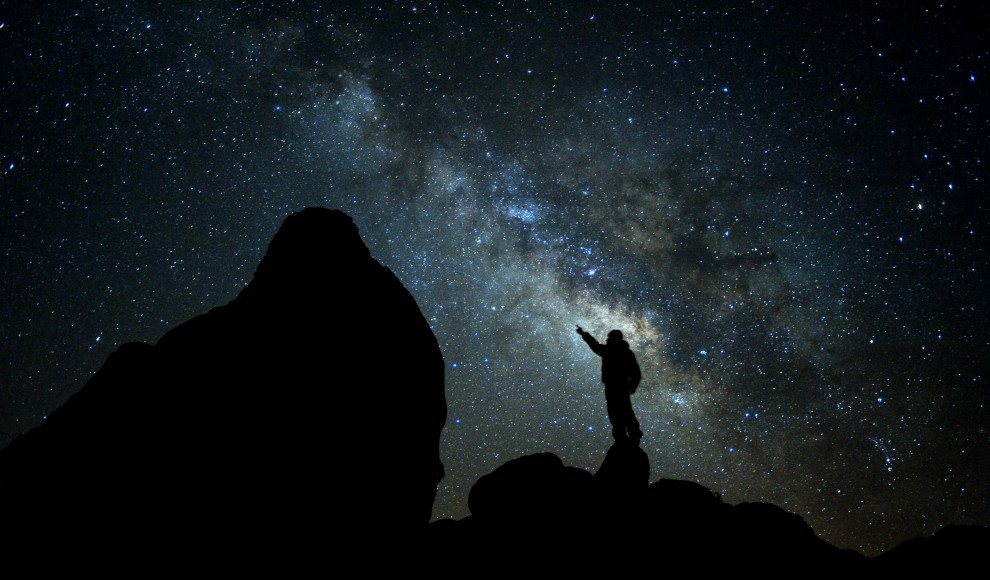


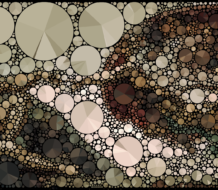

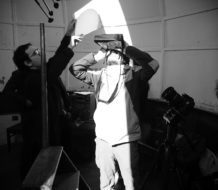
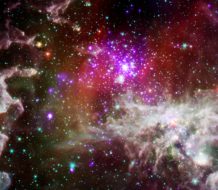

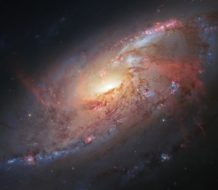
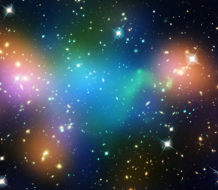
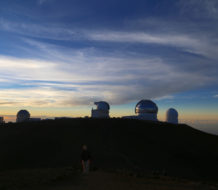

In my oblivious opinion, we are not alone in the universe, only obviously limited.
Yes, absolutely, we are limited by our current technological capacity, by our brains, and by time and space constraints. But you do what you can do, and that may still be effective enough to be meaningful. For SETI researchers, it’s meaningful that within 20 years we will have been able to detect analogs of our laser and radio transmitters on planets around 100 million stars. For exoplanet researchers, it will be meaningul if the atmospheres of the first twenty Earth-like planets whose atmospheres they sniff have no signs of modicication by microbes. We may not answer the question in our lifetimes, but the question is compelling nontheless.
Suppose the same essay is written in a thousand years from now. If scientific development continues progressively it would be a totally different essay. Mentioning communicating with a dog for instance, refering to H. G. Wells and talk about life on Mars etc amount to an account that sounds archaic. We should have talked a bit more about problems with travelling at near light velocity, about technological bottlenecks in inter planetary communications, about energy requirements for interplanetary space travels to other solar systems, about the kinds of humans which might exist eleswhere, about university deparments here doing research on how to develop methods for interhuman communications if ever that becomes a plausible event eventually. For me the issue of the existence of humans elsewhere must be considered to be axiomatic. We need to start to think about how to communicate with such potential exohumans. Since nothing can move faster than light we need to take a longterm view of this distantly possible accolade. In any case they would be quite like humans here, with anatomical differences but they would have their own languages and technolgies like ours, all taken to be in different timeframes, more advanced, less advanced, very primitive or much more advanced. After all they would have seas and storms like here, rain and sunshine as here, mountains and stones as here, vegetation and animals as here. They are likely to have humans too, but there will be differences.
Indeed, anything we do now will seem arcane and archaic in a century, as Wells and late Victorian technology seem to us. The first UFO sightings were flying galleons in France, inspired by the fiction of Jules Verne; only at the dawn of the Cold War did we hear accounts of sleek metallic craft like the cutting edge planes of the time. But that valid point does not neccesarily jibe with a confidence that humans or any vaguely similar exist elsewhere. There is universal a universal biochemical basis and universal evolution of habitable worlds, but after that the pathways of evolution and natural selection become impossible to predict, and only in some highly convergent premise would the result be human or primate. I think high level biological architectures might be radically different from what we have on Earth, with anything humanoid a very unlikely outcome. But that, as in everything in this thread, is just opinion and conjecture. I hope we get some data to settle the question.
Suppose that in our space travels of the distant future, we discover an alien spacecraft with two dead alien bodies in it. Forensic pathology reveals that while they are nearly identical on the surface, they are completely different on the inside. We think one might be an android created by the other. How would we tell which one was the product of mindless, accidental, natural evolution and which one was the intelligently designed android if the nanotechnology we found in both was completely different from anything we were familiar with? Could we even determine if they were both androids? Or if they were the products of two very different paths taken by natural evolution that just happened to end up looking the same on the surface? By what rules would we make such determinations?
A great question. And aspects it of are at the heart of one of the great issues in philosophy: what constitutes free will and how do we distinguish mere sentience and higher order thinking from a zombie that has complex actions? In the hypothetical situation give, the biological entity would presumably have genetic material that was sequentially altered by evolution and natural selection and that could be determined by analyzing it. Of course an android could be similarly constructed by design if the goal was to create ambiguity. The likelihood that two different evolutionary paths would create identical forms at this level is low – convergence is a strong principle but it doesn’t act with a high level of fidelity, because it doesn’t need to. Post-biological entities could presumably improve on natural biology so would presumably diverge from the familiar natural forms over time. But your main point, that in the case of alien, unfamiliar entities, we would be hard pressed to tell the natural from the artifactual, is well taken.
“The likelihood that two different evolutionary paths would create identical forms at this level is low …”
I agree. This would make it reasonable to assume one was an android.
If, when taken out of the environment we found them in, one began to decompose and the other didn’t, that would suggest to us that the decomposing one was the product of natural evolution and other was not “dead” but merely a non-functioning android. Of course, that would be based on the assumption that life anywhere else in the Universe decomposes like that on Earth, which we can’t be sure is the case. In the absence of alien “bacteria” from the planet which the alien was from, it might not decompose at all, but simply remain non-functioning like the android.
“… in the case of alien, unfamiliar entities, we would be hard pressed to tell the natural from the artifactual.”
We would be hard pressed to tell if either had ever been “alive” in the sense we use the term regarding biological life. There would be a possibility that the android could be re-activated. Would that be true of the non-decomposing, dead alien life form? Or is there an “immaterial” or “incorporeal,” animating component to all living things that science will never be able to restore once it departs?
Hello, What do you think of the news of the three newly discovered planets that might be able to host life? What do you think this means? Thank you.
It’s very exciting but not unanticipated. Kepler showed early on that it had the sensitivity to detect Earth-sized planets and in fact it has over 350 Earh-like planets, including some as small as Mars. But it needed a year or so to find those planets in cool orbits similar to the orbit of the Earth around the Sun. Now that the mission has been going for a couple of years, it should find steadily growing numbers of Earth-like planets in habitable zones where liquid water might exist, so all ingredients for biology are present. Kepler will put a hard statistical number on how many such planets are in the Milky Way. That’s the number of habitable planets; whether or not they are inhabited is a much harder question to answrr, but clearly the next stage of the research. Exciting times!
Do I have clear evidence that life exist beyond the confines of Earth’s atmosphere ….No.Do we fully understand how the “Blind Watch Maker ” randomly stumbles upon the general blueprint for making watches…..not yet(Perhaps the watch maker is not as blind as some believe). Does “life” have to be Carbon based ? If not,then we may not know which markers to look for? Are the laws of nature invariant ? So far , we have no evidence to conclude otherwise. But if the laws do vary, depending upon at which point in the space-time of our expanding Universe we happen to be living, then we may never know of non- earth bound “intelligent” life , unless they are more “evolved”, and are compelled ,to contact us first.
A lot of issues raised here, of which I can unpack and address a few. I’d quibble with the phrase “blind watchmaker” even assuming you are using it in a literary vein, because it conveys the idea of design. We have no indication that anything other than unguided natural physical and chemical laws led to the first form of life on Earth, and in fact many of the steps needed to go from simple molecules to a concentrated biochemical factory of roughly cell size have been demonstrated in the lab. You are absolutely right that our evidence for the invariance of physical law in the universe is modest, since we are trapped in time and space and the measurements to show variation are subtle and difficult. It would be very easy for sparse, highly advanced, or strangely configured life to evade our detaction.
Thank you for answering. I use the word “BLIND WATCH MAKER” to emphasize the point that the use of these words entails a philosophical / metaphysical question , unanswerable by Science , since one can always posit a ‘CREATOR” of physical “laws”, which allows life , evolution by natural selection , and “Intelligent” consciousness(the ability of a randomly formed part (entity ) of the Universe to muse on it’s own existence, and the whole of which, he/she/it ,is part of). I intentionally left out the idea of the possibility of Multiple Universe’s ,since,notwithstanding Dr.Hawkings contention, it doesn’t entail the end of Philosophy.I do have one question.Is measurement of the degree of uncertainty involved in our attempt to ascertain the environment on earth at the time when life first arose ,based on our present understanding of physical laws ,possible ?What specific areas /topics/ involve the most conjecture ?I understand that Theories on the origin of life are ,to a large degree, a “Historical Science”, and that randomized”, prospective ,CONTROLLED studies on Evolving Universes , are not testable , except through mathematical modeling .
To your question, there are many uncertianties in the historical science of how life began on Earth. Until a few years ago, we weren’t even sure of the composition of the early atmosphere. The largest uncertainty in the crhonology is the step from RNA fragments to a replicating RNA molecule that could code for protein function in a primitive cell. Many theories on how that may have arisen….
Readers interested in exotic bio chemistries on Titan might look at the following:
Faraday Discuss., 2010, 147, 405-418
DOI: 10.1039/C004788K. http://pubs.rsc.org/en/content/articlelanding/2010/fd/c004788k
Titan is a compelling Solar System target and I hope NASA finds the means for a mission to do more than briefly glimpse and taste the surface, as the Huygens probe did in 2005. And I agree, the best bet for Life 2.0, truly alternative biochemistry, available to us.
“We have no indication that anything other than unguided natural physical and chemical laws led to the first form of life on Earth”
A low-entropy universe was necessary for the emergence and development of the functional complexity required for life to even be a possibility. Roger Penrose has calculated the exceedingly small probability of a pure chance occurrence of our low–entropy universe as 10^10^123 to one, making it simply irrational to just assume that happened by chance. We now know that even a mere single-celled, reproducing life form consists of nanotechnology light years beyond anything modern science knows how to build from scratch, yet we should assume mindless, dead matter assembled itself into such nanotechnology accidentally?
“and in fact many of the steps needed to go from simple molecules to a concentrated biochemical factory of roughly cell size have been demonstrated in the lab.”
We now know life is based on massive quantities of symbolically represented, digitally stored information. The coding regions of DNA contain the information required to construct intricate protein machines necessary for metabolism and reproduction. This information is expressed in a twenty character amino-acid alphabet the “letters” of which are represented digitally in the same way, for example, the ASCII alphabet is represented in computer memory, except DNA uses base 4 instead of binary. This allows for much more dense packaging of information. For example, in binary, in 16 units of memory, 65,536 unique values are possible. In DNA memory using base 4, 16 units of memory can contain 4,294,967,296 unique values. (Not a bad design for not having a designer! ;o)
Where is this lab where such information-based nanotechnology is mindlessly derived from simple molecules, nanotechnology that manufactures not only intricate protein machines allowing for metabolism, but for the production of more biochemical factories, and does this according to the massive quantities of technical information required for such automated manufacturing to even be possible?
You are a skeptic, and that is good. But Penrose’s argument is a variant of Hoyle’s earlier argument on the improbability of information storing molecules emerging naturally, and both have been debunked. Independent combinatory probabilities are not appropriate in a situation where there is feedback, as is the case in the build-up of complexity in chemical networks – demonstrated in the lab and in simulation. DNA is not as good as you say; it’s just good enough, with decent information storing capacity and some redundancy and error-checking. No designer needed. The lab work involves simple molecules concentrating inside lipid membranes and complexity of RNA fragments being catalyzed on the molecule lattices of clay particles, going from a dozen of so atoms to thousands, with the basis of RNA structure. Not life, but early days for this exciting research, and a fair way along the road to a replicating, information storing molecule. So design is a redundant hypothesis.
Chris I: “We have no indication that anything other than unguided natural physical and chemical laws led to the first form of life on Earth”
I would suggest rather than “unguided” consider “self-guided” in the sense that: “prior interactions condition and constrain future possibilities”
The point is that emergence is not unguided any more than it is externally guided. Emergent / evolutionary processes build upon prior recurrent patterns of interaction and it is the building-upon that gives the appearance of some progress and or design – to some observers.
Good point. Ah, the subtlety of language…. I used unguided to avoid any hint of a design implication and preferred it to self-guided to remove self from the picture. Better would be to omit the adjective and just say “…natural physical and chemical laws” and as you say, the nature of carbon chemistry is a basis for growth and complexity, and the ready availability of varying energy sources is a basis for dynamic and evolving biochemistry. As Francis Bacon argues, teleology is a tic that should always be resisted.
If we are not alone, we will have people to deal with – learn from, perhaps; trade, maybe; argue or fight with, possibly. The important one I think would be being able to think about ourselves differently, having an example of intelligent life besides ourselves.
If we are alone, we could never prove it anyway, so it does not really matter.
BUT if we look into this, if we go out there as we can and are agreable to afford, whether we answer the question or not, we will learn much, develop many skills, and likely find all sorts of beneficial possibilities more attainable: off-earth options for energy, for materials, for habitation, for covering our bets somewhat against whatever might befall us, or be done to us by us, on this one planet we know now.
Yes, uniquenss or cosmic isolation will never be proven, we will just be subject to a creeping and incipient sense that we have to make our own way in the “world.” I agree that projection of our technology off-Earth will teach us many things useful to us back home so we should keep that in play.
You are confusing complexity or mere intricacy with **functional** complexity, which is something entirely different. Functional complexity allows for higher order activity, and is a configuration of matter and energy that is extremely unlikely unless, of course, an intelligence knows that is the configuration that will serve its purposes and takes steps to bring it about. There are no examples of significant functional complexity outside man-made technology and, of course, life, which is the most functionally complex system known to us.
It is not a matter of the “improbability of information storing molecules.” It is a matter of the improbability of functional information coming about mindlessly. You are also confusing the information with the medium in which it is stored. Since the nanotechnology of life is based upon, functional, symbolically represented, digitally stored information, we must consider that the only known source of functional, symbolically expressed, digitally stored information is intelligence.
“As Francis Bacon argues, teleology is a tic that should always be resisted.”
Yes. How foolish we were to think the inscription on the Rosetta Stone was anything but the peculiar, fortunate, very lucky product of erosion. ;o)
Seriously, science routinely considers intelligent agency as a possible causal factor in phenomena coming about in areas like forensic pathology, archaeology and in the SETI project. Intelligence is a known reality. Therefore it is enitrely legitimate for science to consider intelligent agency as a causal factor in the origins of the Universe and of life. It isn’t necessarily science’s job to explain the nature and identity of that intelligent agent; that is best left to philosophy and religion, unless, of course, one is an advocate of Crick’s panspermia, which he was forced into because it was obvious to him that information-based nanotechnology didn’t come about mindlessly and accidentally, and he didn’t like the idea of God being responsible for life, so life must have originated in an extraterrestial source and was then somehow transported to Earth.
Intelligent agency is not an illegitimate cause in considering how life came about, it is simply an unneeded postulate given the sturdy progress of research into the orgins of life based on legitimate lab experiments and analogs that show clear steps in the path from molecular components and lipid containers to autocatalytic chemical networks and growing information-storing molecules. It’s just a matter of taste to prefer the postulate based on existing physical law that can and is being tested.
You might as well be attempting to figure out how a functioning laptop PC came about mindlessly, accidentally and completely naturally. Actually that would be easier to do than explaining how the information-based nanotechnology of life came about mindlessly and accidentally. One reason for this is that the technology in that laptop is primitive compared to that found in a single-celled, reproducing life form, and the laptop doesn’t have built into it functionality that manufactures more laptops using available resources.
DNA contains the required information for the construction of astoundingly functionally complex nanotechnology, light years beyond our own. Such information couldn’t have existed before such nanotechnology existed because the contents of DNA would be gibberish, not information, until there was something existing to which it could correspond. Yet such nanotechnology can’t come into existence until the information required for its construction exists.
Maybe we should just admit, since the only known source of functional, symbolically represented, digitally stored information is an intellect, and since significant functional complexity only comes about via an intellect, that the massive functional complexity of the nanotechnology of life, being based as it is upon functional, symbolically represented, digitally stored information, very probably came about via an intellect?
We can just admit, and maybe agree, that your last paragraph contain an premise stated as a fact that scientists do not agree on, and a logical transition that they also would not agree on, and for this discussion we’ll have to leave it at that.
Scientist keep finding places that appear hospitable to life, that have no life. Weirldly, their conclusion from those two facts is that there must be life in those kind of places.
Yes, it seems illogical, maybe perverse. But a recasting of your first statement is that scientists find places (like Mars or Exo-Earths) that might be hospitable to life but where our technology is still insufficient to do a thorough search so we can’t rule life out. And the projected number of hospitable spots is very large, a billion or more in the Milky Way, so I think they would not say “must be life” but would say “very probably is life somewhere among the habitable locations.” It’s a plausibility argument, no more, but a fairly persuasive one.
A great topic and two phrases in the essay and discussion so far have captured my attention: ‘looking in a mirror’ and ‘does life have to be carbon based?’
We are looking in a mirror if we expect other intelligent life forms to resemble us in some way. Even ET looked vaguely humanoid and was carbon based. What is life by our criteria? Is it an organism or physical being that strips energy from matter and reproduces to sustain its presence? I suggest that the term life should be applied where there is a level of awareness higher than matter, and intelligence life be applied where there is a very high level of awareness.
If we wish to investigate another intelligent life form, then we could look for something right under our noses. The Koran and Muslim folk-lore refers to an intelligent life form that shares the Earth with us – The Jinn. Apparently some people perceive them, but most do not. They see us, but we generally don’t and this probably has ensured their survival.
The popular culture influences us all with its anthropocentric imagery, and while advocates of convergent evolution argue that vertebrates and primates might be natural consequences of evolution I doubt they’e inevitable and other architectures are possilble. so yes, intelligent life elsewhere might not look like us at all. Carbon is a universal ingredient for complexity so its a natural building block. I agree recognition is a real issue with radically different modes of intelligent life.
Hi Chris,
Perhaps in answer to your essay, are we alone in the universe, we start with another question. Suppose we woke up one morning to learn that scientists had determined that we were immersed in a vast dimension of conscious mind? What would change? Would the event be mind blowing?
Scientific speculation about life elsewhere in the Universe starts with the premise that “life” and the conscious mind emerge from material processes. But if a vast dimension of conscious intelligence precedes the material world, then it would seem pretty likely that it has acted on molecular organization wherever it could.
The question of the nonphysical nature of the universe is one of the biggest and most profound that science can address. Many argue that the issue cannot be proven and will always remain simply a matter of personal belief. I would argue that it is a straightforward “yes or no” question. It has not been answered because the right questions are not pursued.
The question can start with a focus on the origin of “life.” Those who pose this question typically ask, what were the early molecular structures of life? This is certainly an interesting question. However, isn’t the real question, what sustained the fantastic choreography of life’s dancing molecules from the beginning on to the present? What caused the dancing dynamic to expand upon itself trillions upon trillions of times? What directs the watery fluid of life with the rigidity of a machine? This is the question that Erwin Schrodinger asked in “What is Life?”. Schrodinger’s question has been trivialized and ignored but never answered in a substantive way.
Beyond astrophysical speculation, a clear answer on the nonphysical nature of reality would irrevocably affect our view of our “aloneness” in the universe. When one looks closely at the great unknowns–the operation of human memory and mind, the mechanics of animal instinct, and the source of life’s relentlessly expanding molecular organization–one finds clear evidence of a vast frontier that science has hitherto ignored.
I would enjoy hearing your thoughts!
Carl Gunther, author “Mind, Memory, Time”
I don’t believe we are alone in this universe. If space is limitless then the number of galaxies or universes are limitless. That leads one to conclude that the must be a good probability the a planet like ours exists somewhere out there. We don’t have the ability or the capacity to reach out to them as our life spans are limited only to about 100 years. That will not take us far enough in this limitless universe. Sending colonies in a space ship may be a futile attempt as we may go in a direction where an earth like ours does not exist. The logical conclutions appears to be that there is a good probability that there is life out there somewhere but we may never know for sure.
I don’t understand much of this article.
The “Principle of Mediocrity” comes from where? Is it a “principle”? How do we not know we are in the tail of a distribution, and not in the mediocre center? So far as I know, there is zero evidence that other humans exist anywhere but on earth. Using such a “principle” to generate a number like 10 billion billion of habitable worlds leads one to accept the conclusion before evidence is found.
What is “habitable”? The general reader would assume “habitable” for humans, while I think the author is talking about something else.
I don’t understand “In considering true cosmic companionship we enter a landscape littered with untested assumptions and anthropocentric thinking.” What companionship? Why is what landscape “littered” with “untested assumptions and anthropocentric thinking”? Thank goodness there are many untested assumptions, given the quantity and distribution of the quality of assumptions. And of course we do the inescapable anthropocentric thinking. Is there an alternative?
I don’t understand how “Biology grips the Earth like a fever.” Do we know that the interior of the body of the earth supports microbes? What is feverish about earth’s biology?
And as a lay person there is more that I don’t understand, but enough. For me, it would be better if the author has written with less hyperbole and more straightforwardness.